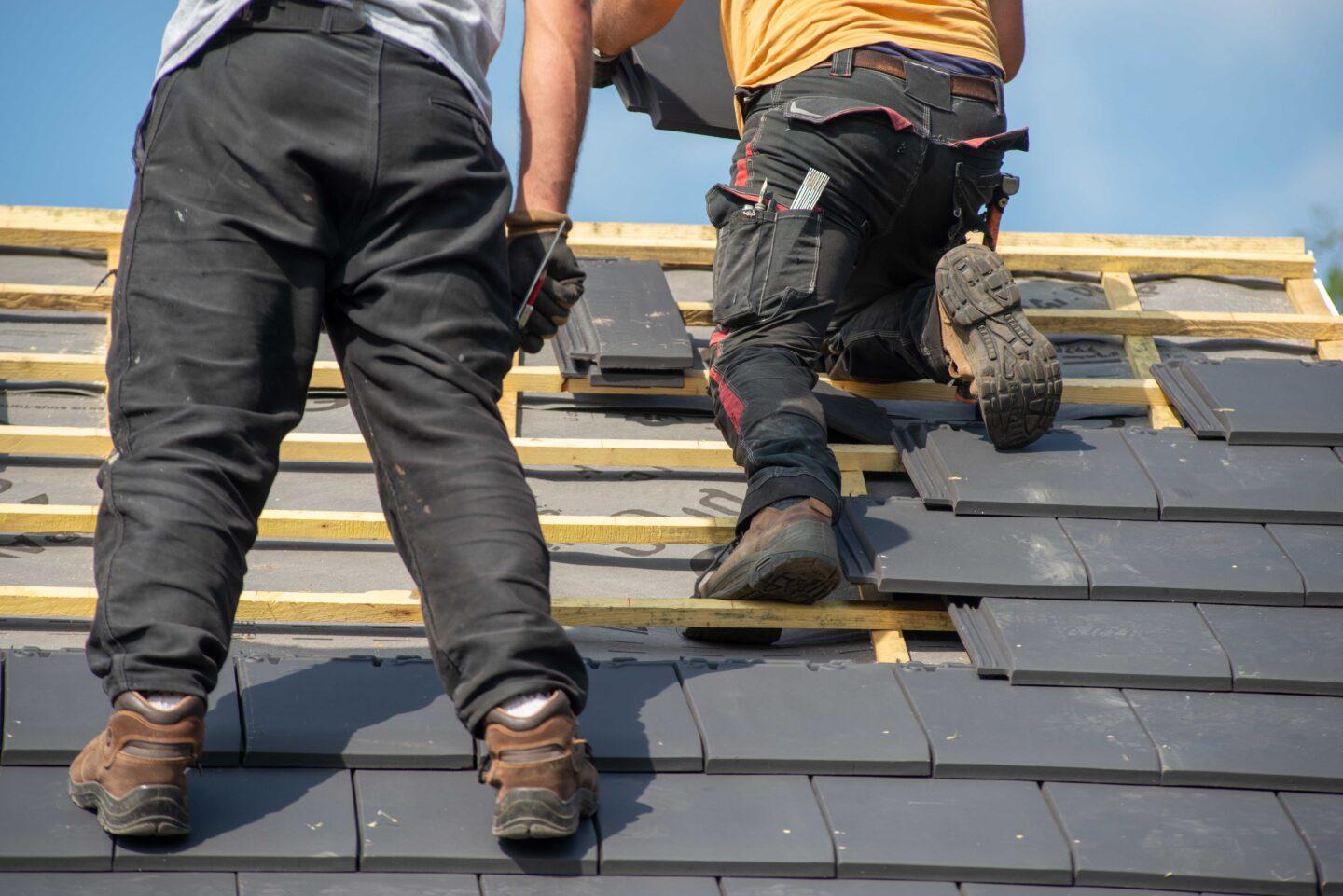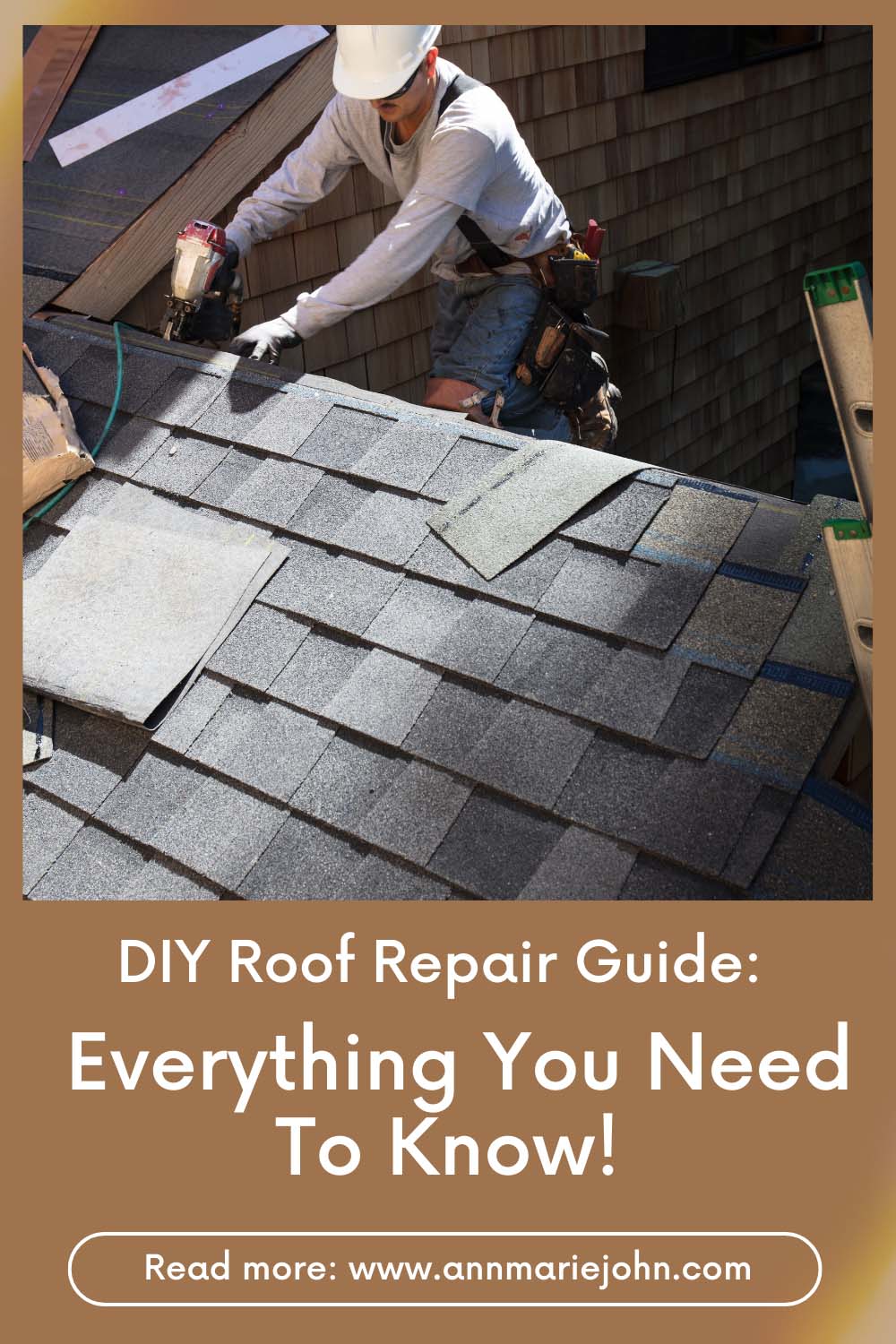Before taking on a roof repair project yourself, make sure you have all the information you need to get it done right!

DIY roof repair is a large undertaking and requires much knowledge, resources, and effort. It can be an intimidating project for the inexperienced homeowner; however, learning what to expect and being prepared makes a big difference in avoiding common mistakes that could cost you time and money. This guide will equip you with essential knowledge on the subject, helping you understand the complexities associated with roof repair and how to navigate them.

1. Consider Professional Help
Not all roof repair projects are suitable for DIY. If you find yourself in over your head, don’t hesitate to call on the services of a professional. In the case of complex repairs or extensive damage, hiring an experienced roofer is the best option to ensure the job is done correctly and safely. An experienced contractor can also provide valuable advice and guidance on the best materials, techniques, and maintenance plans for your roof.
By enlisting the help of an expert in DIY roof repair projects, you can guarantee that any repairs are carried out correctly and that the necessary precautions are taken. Embarking on DIY roofing can be dangerous, so feel free to call the pros if your project gets too complicated. Additionally, professional contractors provide warranties to ensure complete peace of mind regarding their services.
2. Understand Your Roof’s Anatomy
Understanding the components that make up your roof’s anatomy is essential in identifying which ones need repair. These parts include shingles, roofing material, underlayment, flashing, vents, and gutters. The shingles are the outermost layer responsible for deflecting water away from the roof’s surface. The underlayment provides additional protection, while flashing prevents water from penetrating the roof along joints and edges. Vents allow air to circulate, while gutters channel water away from your home’s foundation.
3. Take Precautions for Safety
Start by investing in safety gear, including a sturdy ladder, non-slip footwear, safety ropes, and a harness. Always have a spotter present to ensure stability, especially when climbing or descending a ladder. It’s also essential to check the local weather forecast before starting work; avoid working on the roof during high winds, heavy rain, or snow, as these conditions increase the risk of accidents.
Be mindful of the roof’s slope as well – steep roofs are more hazardous to work on. Lastly, be aware of your surroundings, especially power lines or overhead obstructions. Adhering to these safety precautions can significantly reduce the risk of injury during a DIY roof repair project.
4. Research Your Roofing Material Options
When researching roofing material, consider the material’s lifespan, cost, maintenance requirements, fire rating, and energy efficiency. Asphalt shingles are popular for residential roofs due to their affordability and durability. Clay or concrete tiles also make good choices as they last up to 50 years with little maintenance; however, they are more expensive than asphalt shingles.
Metal roofing is lightweight, energy-efficient, and has a longer lifespan than other materials; however, it’s more susceptible to noise from rain or hail. Whatever material you choose for your DIY roof repair project, make sure it matches the overall aesthetic of your home and meets local building codes.
5. Area-Specific Considerations
Your area’s climate and weather conditions should also be considered when planning a DIY roof repair project. For example, if you live in an area with heavy snowfall during winter, you’ll need to use materials that can withstand extreme temperatures and excessive weight. Additionally, consider whether or not the roof is accessible from ground level – if not, you may need to rent a lift or scaffolding to reach higher points.
By considering the area-specific conditions and being aware of any potential risks posed by your home’s location, you can ensure that all repairs are carried out safely and effectively. Additionally, be sure to check local building codes – they vary from state to state, so familiarize yourself with the regulations in your area before beginning any work.
6. Clean and Prepare the Roof
Clean the roof before beginning any DIY repair work. This helps identify problem areas and wear and tear that may have been missed. Start by removing all debris from the roof, then use a high-pressure washer or a broom to remove dirt from the surface area. Checking for algae growth and using a mild detergent to eliminate it can also be beneficial.
If there are any cracks or holes in the roof, these should be filled with a sealant before attempting repairs. The sealant will protect against moisture and prevent further wear and tear from occurring – this is especially important if you live in an area with high rainfall levels. Once all necessary preparations have been made, you can begin making repairs.
In Conclusion
DIY roof repair projects can be a great way to save money and increase the value of your home. However, it’s essential to understand all aspects of the project before attempting any work. By following the tips above, you can guarantee that roofing repairs are carried out safely and effectively – ultimately saving you time and money in the long run. Whether you’re an experienced DIYer or a first-time fixer, these tips will help ensure your success.
